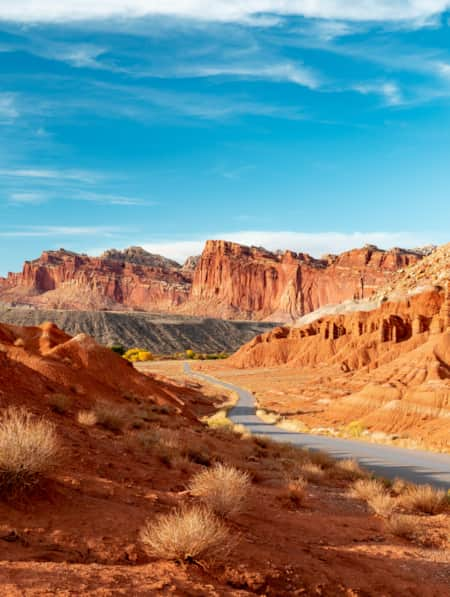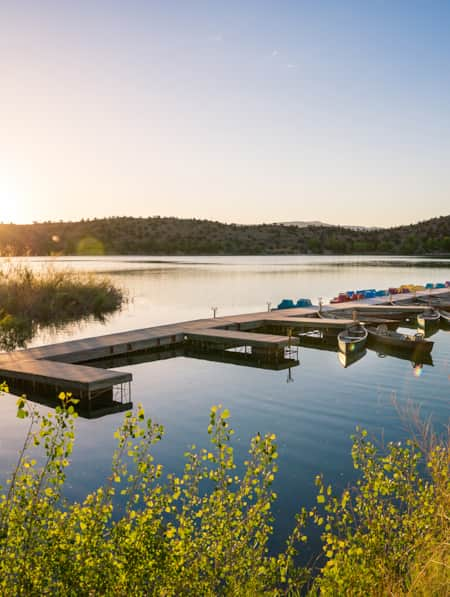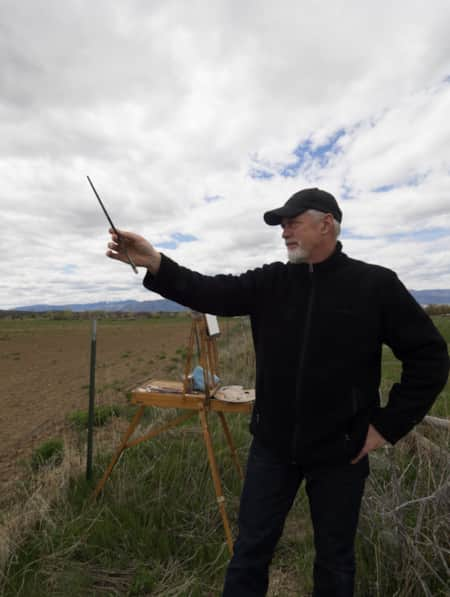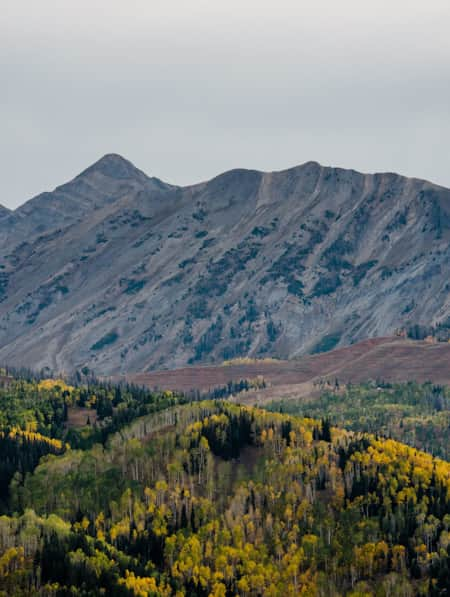Mighty Mineral
Real Salt comes from an ancient sea bed in Central Utah. Yes, really.
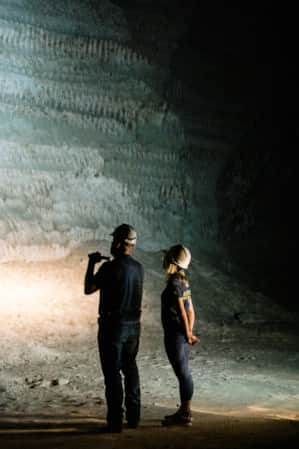
A few salt shakers stand tall on a shelf at the nondescript Redmond Minerals office. The contents resemble terrazzo with pink, red and black specks amidst the abundant white granules.
This magnificently tasty mineral — an artisanal sodium chloride — is mined some 370 feet under us. Unrefined and unprocessed, it’s aptly branded Real Salt.
Above ground, the salt works encompass several towering structures where various grades of salt are crushed and screened. A dirt road leads to a yawning hole in the ground, the start of miles of salt tunnels.
Donning a hard hat, Kyle Bosshardt, the production manager and a great-grandson of one of the mine’s founders, saddles the driver’s seat of a pickup as our tour guide. We plunge into the depths of the earth.
A blazing summer sun fades into a few rays in the rear-view mirror until only our headlights are piercing the pitch black. We descend below the layer of dirt quickly via 30-foot wide-and-tall-tunnels, navigating our way to the subterranean salt.
This salt deposit is approximately two miles in length, a quarter mile wide and nearly a mile deep. Bosshardt estimates that Redmond could continue to mine at the current rate of 50,000 pounds per day for another 400 to 600 years.
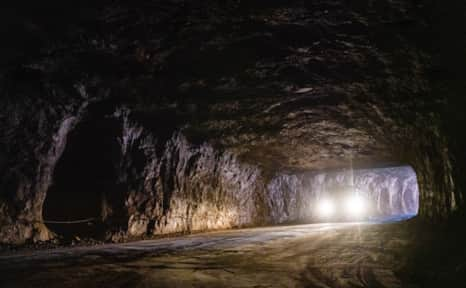
Real Salt is mined in Redmond, Utah, some 370 feet underground.
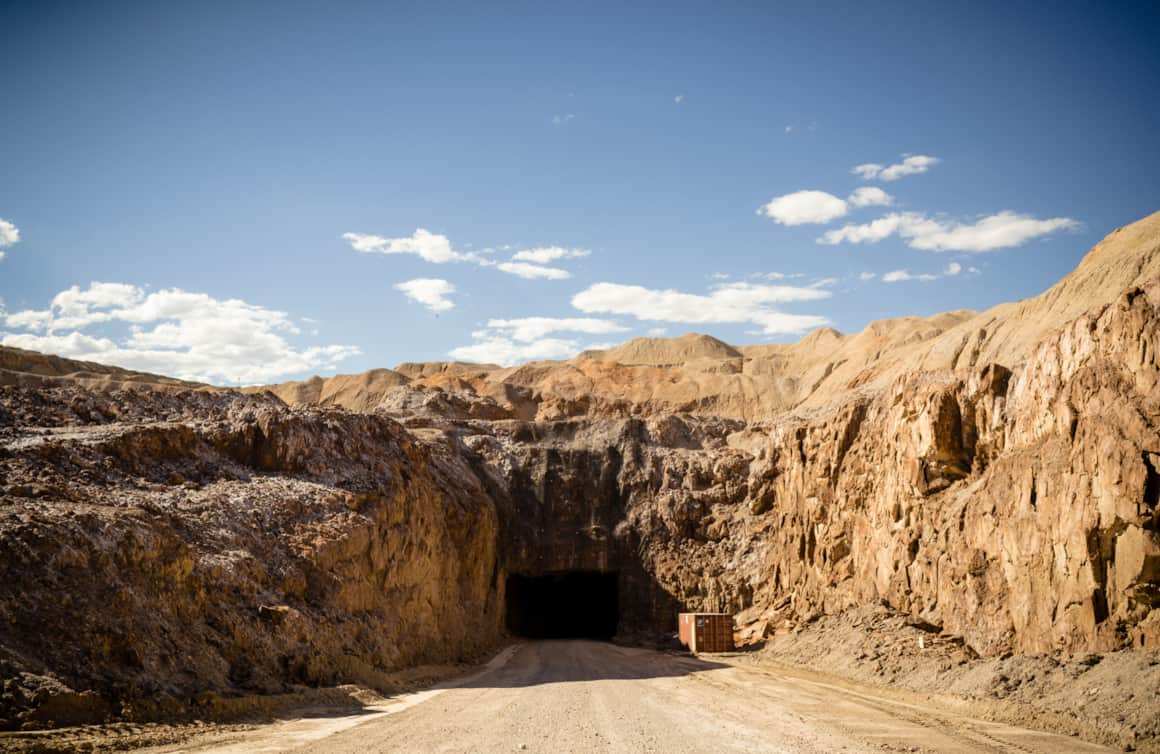
"Bosshardt estimates Redmond could continue to mine at the current rate of 50,000 pounds per day for another 400 to 600 years. "
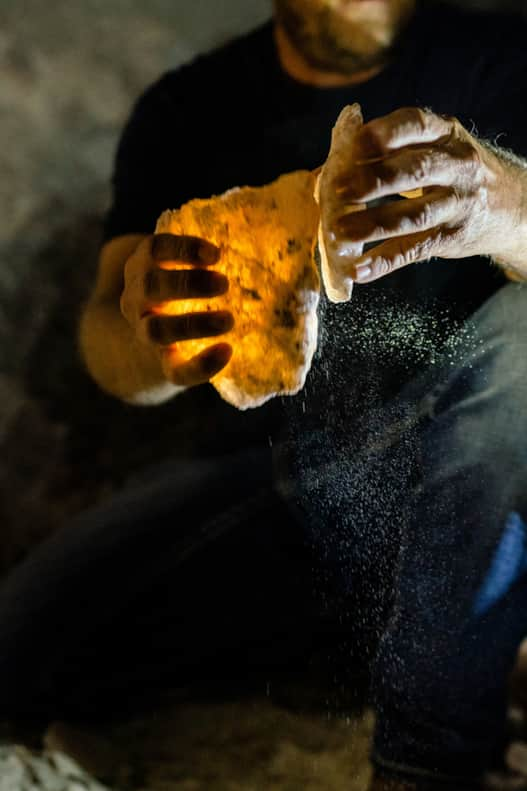
The hue of Real Salt comes from more than 60 naturally-occurring minerals.
Photo: Austen Diamond
More than one million packages of Real Salt are sold annually. A once-family farm has become a multimillion dollar business. If you find yourself in Salt Lake City, you can pick up some Real Salt and other local products at the Redmond Heritage Farms Store.
All salt is technically sea salt, since it’s produced in three distinct ways from three different marine sources: evaporating brine from modern oceans, harvesting the dead seas and the excavation and mining of ancient sea beds.
It’s logical to think that a Utah salt would be collected from the Great Salt Lake or the Bonneville Salt Flats. However, Real Salt is mined in Redmond, in Central Utah, from the remnants of an ancient inland sea.
Salt settled to the bottom of the Sundance Sea in the Jurassic Period of the Mesozoic Era, roughly 200 to 145 million years ago. Trapped under 5,000 feet of volcanic ash and bentonite clay, it stayed pristine for aeons. As time wore on, the salt vein was pushed up vertically by tectonic shifts — called diapir — in the Continental Divide, rousing it to near surface level.
Indeed, Utah is famous for unearthed treasures from the Jurassic Period. Approximately 65 miles as the crow flies to the east at the Jurassic National Monument’s Cleveland-Lloyd Dinosaur Quarry, archeologists have dug up pristine dinosaur bones, including Allosaurus, Utah’s state fossil. While you won’t find drawings of salt shakers on school lunch boxes like the towering prehistoric creatures, it sure does make those school lunches taste better. (Read: “View Millions of Years of Geologic History in an Afternoon.”)
We park in a tunnel of culinary-grade salt. Picking up two pinkish softball-sized salt rocks, Bosshardt illustrates how the company harvests Real Salt. He rubs the salt rocks together. Illuminated in the darkness by the truck’s headlights, flakes cascade from the friction.
A track excavator powers a drum equipped with carbide teeth to provide a powerful amount of friction against the walls of salt. It piles more than 10 feet high. The salt is taken above ground to be crushed and screened — then it’s shipped to Heber for packaging.
Bosshardt holds a flashlight behind a salt rock, illuminating the many pinks, reds and whites. Without additives and chemicals (for anti-caking and shelf-stability) or further processing such as bleaching, the hue of Real Salt comes from more than 60 naturally-occurring minerals. These include calcium, copper, magnesium, potassium, zinc and more.
Each variety of natural salt found around the globe boasts different mineral compositions, thus creating a unique flavor profile, which can vary from region to region. Real Salt is slightly sweet, which helps enhance subtleties in food.
"Each variety of natural salt found around the globe boasts a unique flavor profile. Real Salt is slightly sweet, which helps enhance subtleties in food. "
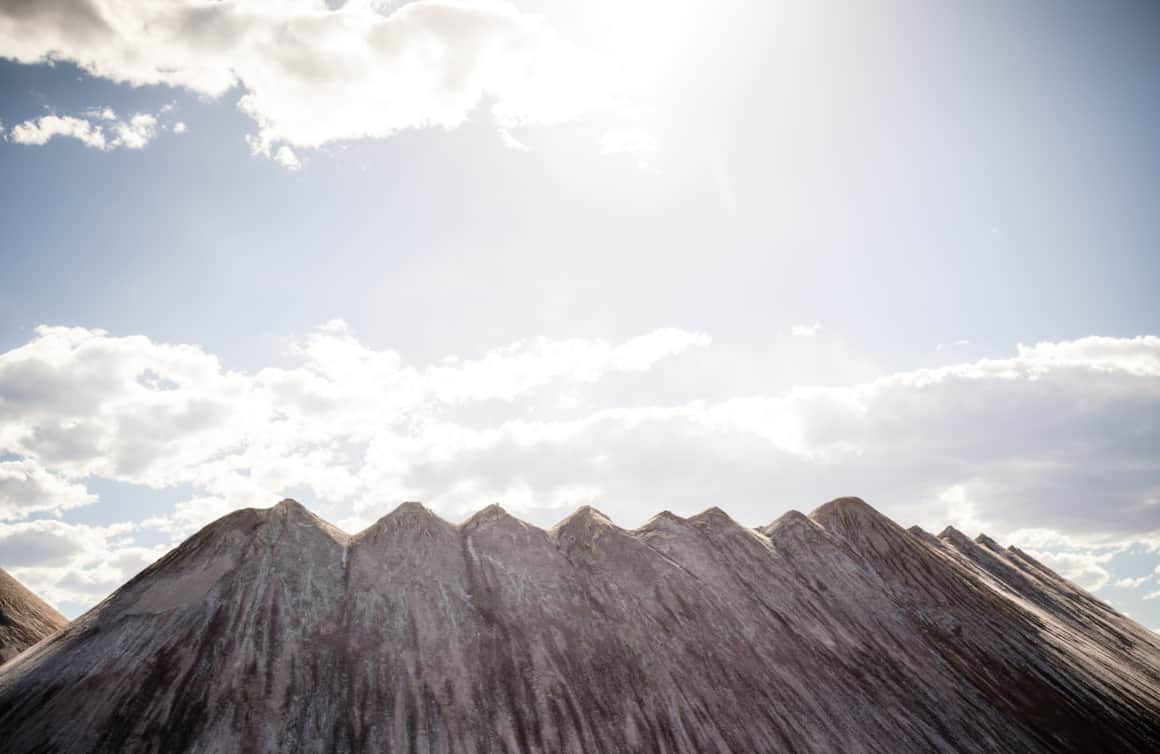
Real Salt is mined in Central Utah from the remnants of an ancient inland sea.
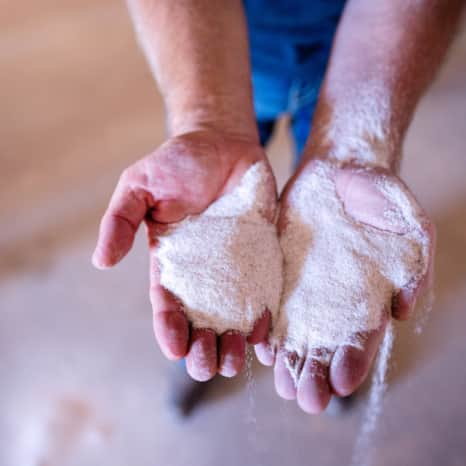
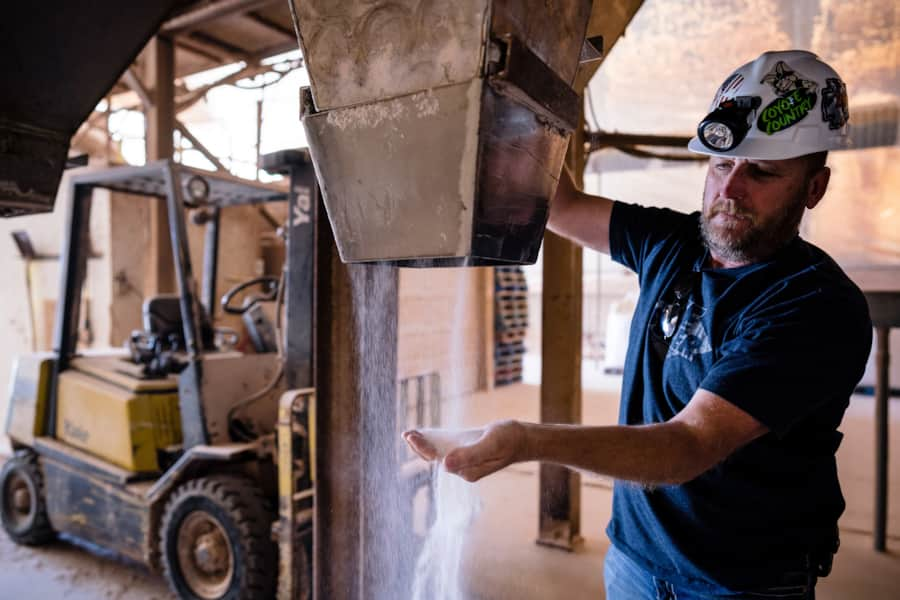
Several fledgling salt mining operations existed in Redmond prior to 1959. That’s when, facing drought and uncertain times on their farm, the brothers Milo and Lamar Bosshardt noted that on either end of their land there were saltworks. Assuming they too were on top of salt, they took a gamble on purchasing excavation equipment, and began digging a very big hole.
Approximately 30 feet below what were once corn fields, the Bosshardts hit salt. And not just a pinch. A whole berg of salt.
Production ramped up, with salt primarily sold to the state of Utah for de-icing roads, and to ranchers for their livestock. Culinary salt, under the Real brand, still constitutes just a fraction of total sales for the company.
The Bosshardts were continuously told that this salt made for a healthy herd, and ranchers became such big believers they also used the salt on their family tables. Eventually, the family’s salt was branded and sold to the general public, and the business expanded quickly as health food became increasingly popular.
Salt has a storied history with humankind. From wars to taxes to religious ceremonies, salt has been a large part of civilization, dating back to the first salt mining in 6,000 B.C.
Now, of course, it’s so commonplace that we take it for granted on every dining table across the world. But it tastes better when you know your salt, and when you know it’s really real.
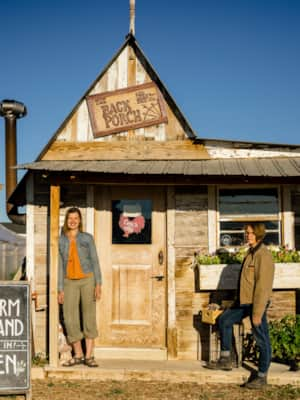
Good Roots: The Faces of Utah’s Food Culture
Meet some of the agricultural entrepreneurs that are elevating the tastes of Utahns and visitors through heritage and best practices, new and old.
What's Nearby
-
Granary Arts
A contemporary art space with rotating exhibits from across the country, next door, the Ephraim Co-op has a gift shop of locals’ crafts and goods.
-
Manti-La Sal National Forest
The Manti-La Sal National Forest consists of three blocks located in central, eastern and southeastern Utah. There are several high elevation lakes, and developed areas for fishing and camping.
-
Palisade State Park
Golfing, camping, and watersports (kayaks, canoes, and paddle boards can be rented on-site).
-
Skyline Drive
Fairview canyon and Highway 31 are known as Skyline Drive. The drive between Fairview and Huntington is one of the most beautiful in the state. In addition to driving, Skyline Drive can be explored on bike in the summer, or on snowmobiles or cross country skiis in the winter (Fairview has several options for rentals).
-
Spring City
Spring City is one of only two sites in the United States where the entire town is on the U.S. National Register of Historic Places. For lovers of history, art, fine craftsmanship, preservation and simple living, Spring City and the wider Sanpete Valley have much to offer. Annual events include Heritage Day, Plein Air Festival and a Bluegrass and Folk Festival. (Read: Gleaning a Small Town's Harvest)

